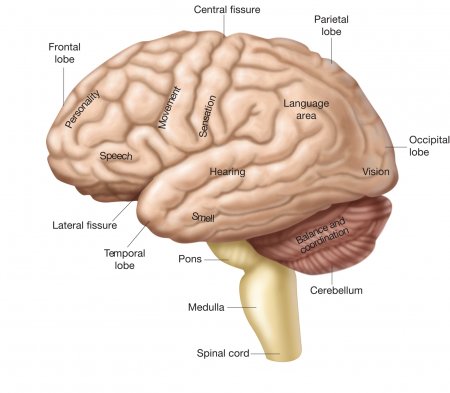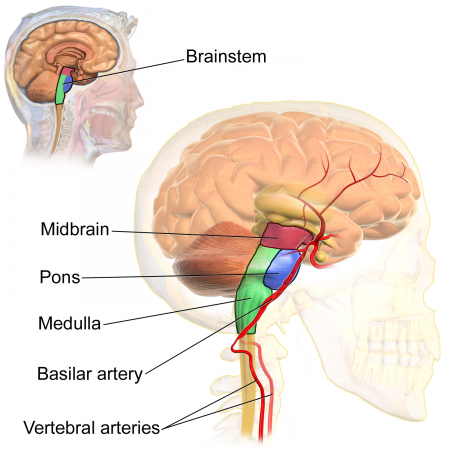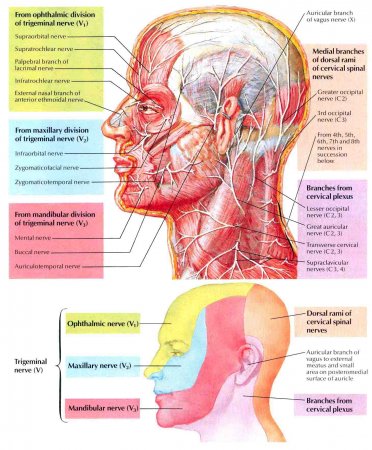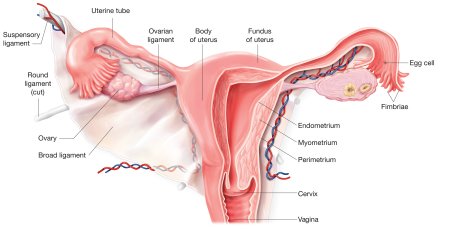The eyes and Vision
- Category: Nervous system
- Views: 77440

The sensory organs for vision - the eyes - are at the front of the head, but the actual visual sense is provided by areas of the brain at the back and sides. Seeing an object and recognizing it for what it is involves image processing by cells in the retina and brain. Three such types of cells are involved in this processing; some respond best to a clearly defined slit of light (or dark), others generally react to any location or orientation of the image, and some to specific features.
The ears and hearing
- Category: Nervous system
- Views: 78939
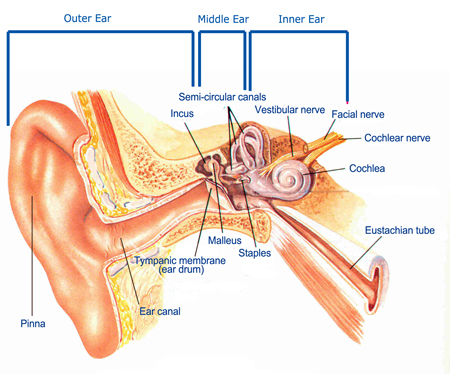
The ear is a group of sensory organs in the head that collaborate to produce the sense of hearing. Together these organs perform the amazing function of converting sound waves in air into electrical signals to transmit to the brain. The ear also contains several special structures that produce the body’s sense of equilibrium, or balance.
Three major regions make up the ear: the outer ear, middle ear, and inner ear. The outer ear consists of the exterior structures of the ear, the auricle and external auditory canal. Visible on the exterior of the head is the auricle, the external part of the ear that extends from the head. The auricle is made of elastic cartilage and adipose tissue covered with skin. It is a flexible organ whose curves help to conduct sounds into the other structures of the ear. In the center of the auricle is the external auditory canal, a tube that conducts sound through the body’s exterior and skull and into the middle ear.
The cerebrum
- Category: Nervous system
- Views: 90256
The cerebrum is the most superior and anterior of the brain’s major regions. It is the seat of reason, planning, memory, and sensory integration. All conscious thought originates in the cerebrum and can influence the subconscious functions of the lower regions of the brain.
The cerebellum
- Category: Nervous system
- Views: 80447
The cerebellum is located behind the top part of the brain stem (where the spinal cord meets the brain) and is made of two hemispheres (halves).
The cerebellum receives information from the sensory systems, the spinal cord, and other parts of the brain and then regulates motor movements. The cerebellum coordinates voluntary movements such as posture, balance, coordination, and speech, resulting in smooth and balanced muscular activity. It is also important for learning motor behaviors.
The brain stem
- Category: Nervous system
- Views: 81812
The brain stem is one of the most basic regions of the human brain, yet it is one of the most vital regions for our body’s survival. It forms the connection between the brain and the spinal cord, maintains vital control of the heart and lungs, and coordinates many important reflexes.
Anatomy
The brain stem is a tube-shaped mass of nervous tissue a little over 3 inches (8 cm) long. It is located at the base of the brain, superior to the spinal cord and inferior to the cerebrum. As the brain stem ascends from the spinal cord, it widens and becomes more complex in its structures, both internally and externally.
The brain
- Category: Nervous system
- Views: 86647
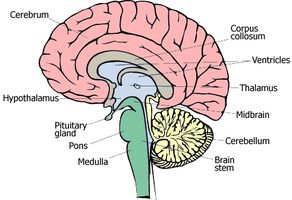
The brain is one of the most complex and magnificent organs in the human body. Our brain gives us awareness of ourselves and of our environment, processing a constant stream of sensory data. It controls our muscle movements, the secretions of our glands, and even our breathing and internal temperature. Every creative thought, feeling, and plan is developed by our brain. The brain’s neurons record the memory of every event in our lives.
In fact, the human brain is so complicated that it remains an exciting frontier in the study of the body; doctors, psychologists, and scientists are continually endeavoring to learn exactly how the many structures of the brain work together intricately to create our powerful human mind.
The nerves of the head and neck
- Category: Nervous system
- Views: 103777
The nerves of the head and neck include the most vital and important organs of the nervous system – the brain and spinal cord – as well as the organs of the special senses. In addition, in this region we also find the major cranial and spinal nerves that connect the central nervous system to the organs, skin, and muscles of the head and neck. These structures all work together to control every part of the body and receive sensory messages from the environment and the body’s internal structures.
The uterus
- Category: Endocrine system, The female reproductive system
- Views: 188797
The uterus, also commonly known as the womb, is a hollow muscular organ of the female reproductive system that is responsible for the development of the embryo and fetus during pregnancy. An incredibly distensible organ, the uterus can expand during pregnancy from around the size of a closed fist to become large enough to hold a full term baby. It is also an incredibly strong organ, able to contract forcefully to propel a full term baby out of the body during childbirth.
The uterus is approximately the shape and size of a pear and sits in an inverted position within the pelvic cavity of the torso. It is located along the body’s midline posterior to the urinary bladder and anterior to the rectum. The narrow inferior region of the uterus, known as the cervix, connects the uterus to the vagina below it and acts as a sphincter muscle to control the flow of material into and out of the uterus.
The testes
- Category: Endocrine system, The male reproductive system
- Views: 154388
The testes (singular: testis), commonly known as the testicles, are a pair of ovoid glandular organs that are central to the function of the male reproductive system. The testes are responsible for the production of sperm cells and the male sex hormone testosterone. The testes produce as many as 12 trillion sperm in a male's lifetime, about 400 million of which are released in a single ejaculation.
The supraneal (adrenal) glands
- Category: Endocrine system
- Views: 79020
The supraneal, or adrenal, glands are a pair of glands that secrete hormones directly into the bloodstream. Each gland can be divided into two distinct organs. The outer region, the adrenal cortex, secretes hormones which have important effects on the way in which energy is stored and food is used, on chemicals in the blood, and on characteristics such as hairiness and body shape. The smaller, inner region - the adrenal medulla - is part of the sympathetic nervous system and is the body's first line of defense and response to physical and emotional stresses.
